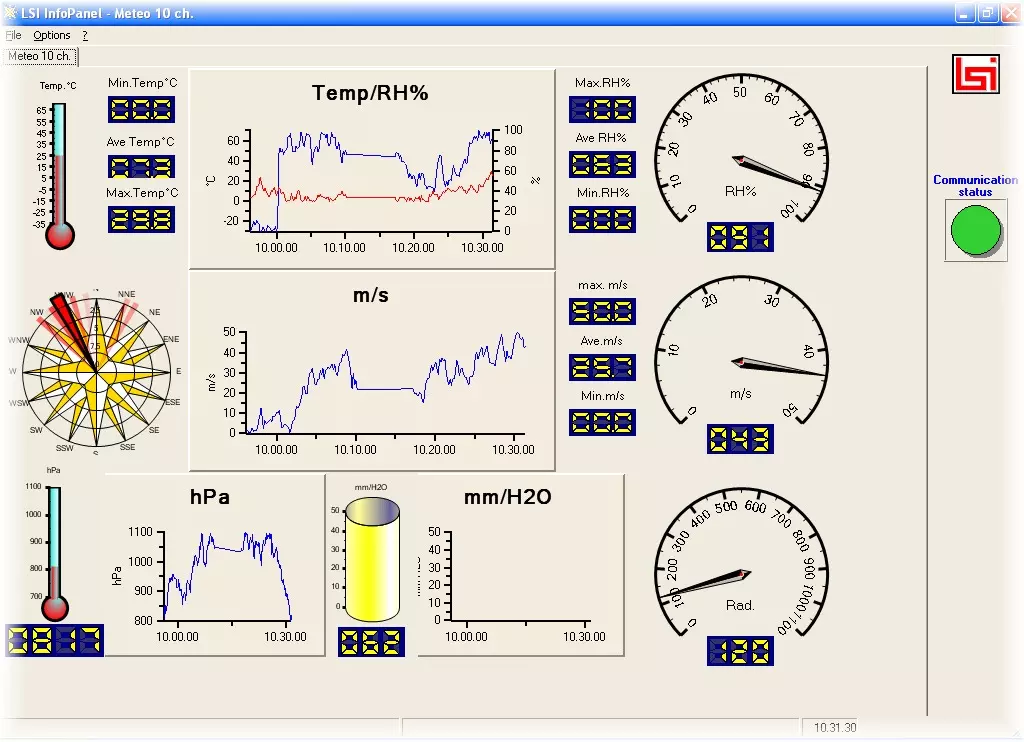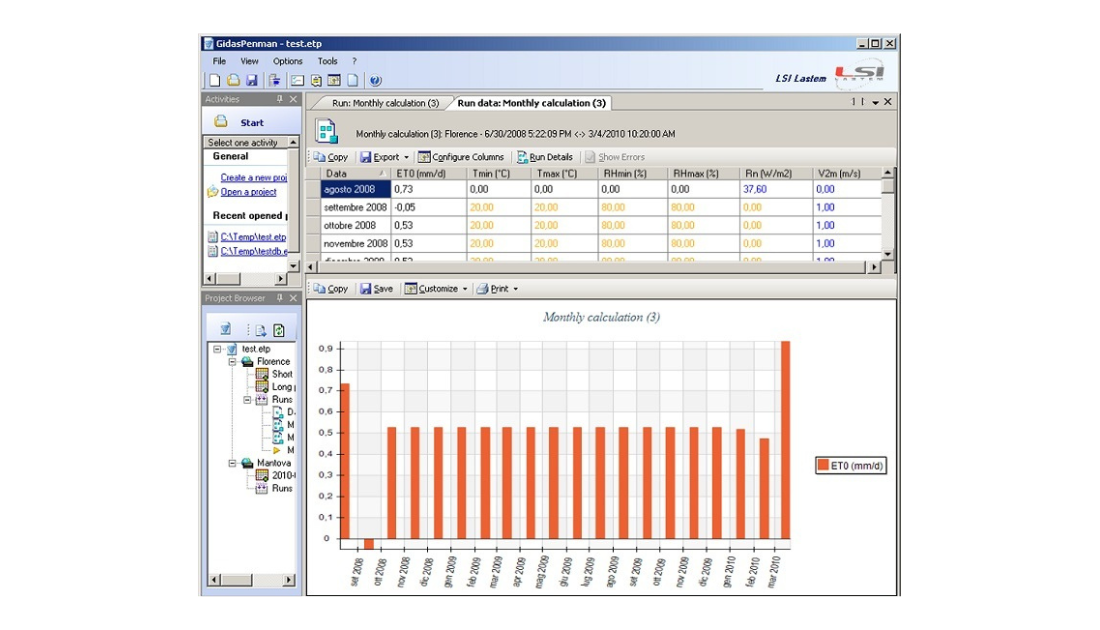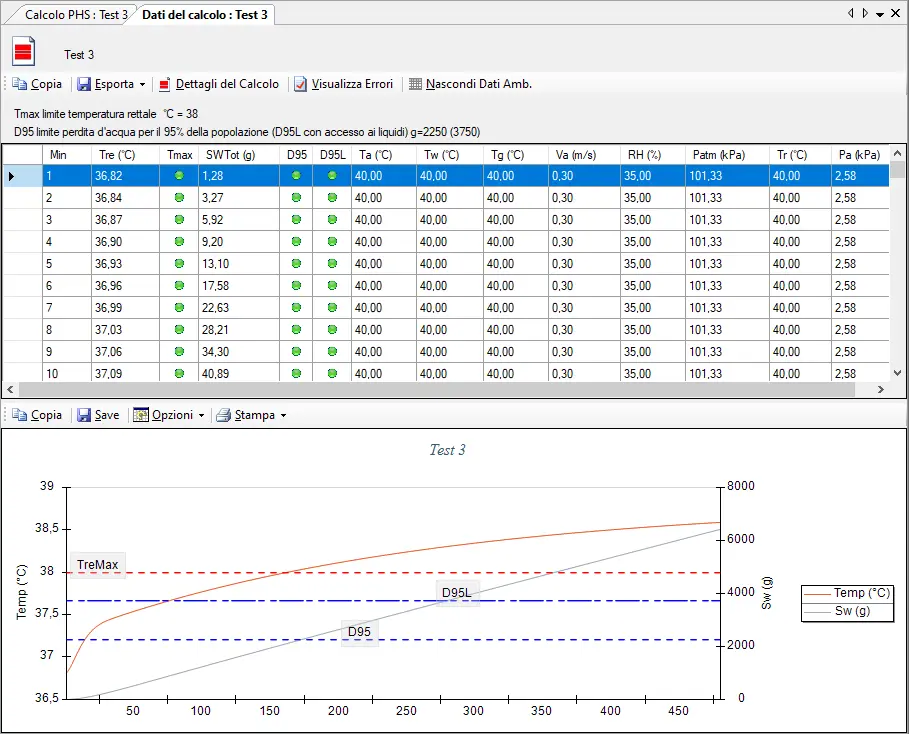GIDAS-ADM
Model for the calculation of odor dispersion with atmospheric diffusion models
Module for calculating and displaying the odor concentration on an area.
The calculated value can be expressed as odor units or as a percentage compared to the maximum recorded value.
Model for the calculation of odor dispersion with atmospheric diffusion models
GIDAS-ADM calculates and results display of odor concentration over a specific area. It allows to carry out a pre-analisys of the odor concentration by using a simplified version of the Gaussian model, WindImula, which is developed by Maind Srl and ENEA (National Agency for New Technologies, Energy and Sustainable Economic Development) and recommended by ARPA Agency. GIDAS-ADM results cannot be used according to the relevant international regulations.
GIDAS-ADM
Highlights
- Calculation of the dispersion of odor concentrations;
- Setting the source and emission;
- Display of real-time results on the map;
- Calculation and display of the stability class of the atmosphere;
- Report creation;
- Model code: BSZ422.
Other Highlights
Results
- Graphic view of results on a map and numeric view on a tabular report;
- Automatic calculation of concentration on an hourly basis and calculation of mean value over the selected period;
- Calculation of odor concentration expressed as odor units, which are configured according to the peack to mean ratio, or expressed as a percentage comared to the maximum value recorded in the specific area;
- Calculation and view of the atmospheric stability class;
- View of real time temperature, wind speed and wind direction;
- Copy-paste function of the map with the obtained results;
- Report in HTML format with customizable logo.
Configuration of parameters
- Use of meteorological data as recorded in the GIDAS data base;
- Selection of quantities required for the calculation: temeprature, wind speed, wind direction, standard deviation of direction or net and global radiation;
- Configuration of the source and the predictable emission;
- Selection of the period to consider or real time mode;
- Configuration of the map used ad background of the view.
Documents
Description
Model for the calculation of odor dispersion with atmospheric diffusion models
GIDAS-ADM calculates and results display of odor concentration over a specific area. It allows to carry out a pre-analisys of the odor concentration by using a simplified version of the Gaussian model, WindImula, which is developed by Maind Srl and ENEA (National Agency for New Technologies, Energy and Sustainable Economic Development) and recommended by ARPA Agency. GIDAS-ADM results cannot be used according to the relevant international regulations.
GIDAS-ADM
Highlights
- Calculation of the dispersion of odor concentrations;
- Setting the source and emission;
- Display of real-time results on the map;
- Calculation and display of the stability class of the atmosphere;
- Report creation;
- Model code: BSZ422.
Other Highlights
Results
- Graphic view of results on a map and numeric view on a tabular report;
- Automatic calculation of concentration on an hourly basis and calculation of mean value over the selected period;
- Calculation of odor concentration expressed as odor units, which are configured according to the peack to mean ratio, or expressed as a percentage comared to the maximum value recorded in the specific area;
- Calculation and view of the atmospheric stability class;
- View of real time temperature, wind speed and wind direction;
- Copy-paste function of the map with the obtained results;
- Report in HTML format with customizable logo.
Configuration of parameters
- Use of meteorological data as recorded in the GIDAS data base;
- Selection of quantities required for the calculation: temeprature, wind speed, wind direction, standard deviation of direction or net and global radiation;
- Configuration of the source and the predictable emission;
- Selection of the period to consider or real time mode;
- Configuration of the map used ad background of the view.
Additional information
| Applications |
|---|
Description
Model for the calculation of odor dispersion with atmospheric diffusion models
GIDAS-ADM calculates and results display of odor concentration over a specific area. It allows to carry out a pre-analisys of the odor concentration by using a simplified version of the Gaussian model, WindImula, which is developed by Maind Srl and ENEA (National Agency for New Technologies, Energy and Sustainable Economic Development) and recommended by ARPA Agency. GIDAS-ADM results cannot be used according to the relevant international regulations.
GIDAS-ADM
Highlights
- Calculation of the dispersion of odor concentrations;
- Setting the source and emission;
- Display of real-time results on the map;
- Calculation and display of the stability class of the atmosphere;
- Report creation;
- Model code: BSZ422.
Other Highlights
Results
- Graphic view of results on a map and numeric view on a tabular report;
- Automatic calculation of concentration on an hourly basis and calculation of mean value over the selected period;
- Calculation of odor concentration expressed as odor units, which are configured according to the peack to mean ratio, or expressed as a percentage comared to the maximum value recorded in the specific area;
- Calculation and view of the atmospheric stability class;
- View of real time temperature, wind speed and wind direction;
- Copy-paste function of the map with the obtained results;
- Report in HTML format with customizable logo.
Configuration of parameters
- Use of meteorological data as recorded in the GIDAS data base;
- Selection of quantities required for the calculation: temeprature, wind speed, wind direction, standard deviation of direction or net and global radiation;
- Configuration of the source and the predictable emission;
- Selection of the period to consider or real time mode;
- Configuration of the map used ad background of the view.
Additional information
| Applications |
|---|
Reviews
There are no reviews yet.






Reviews
There are no reviews yet.